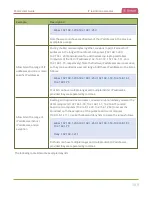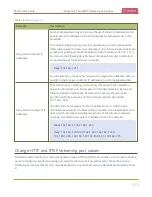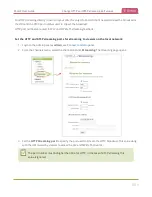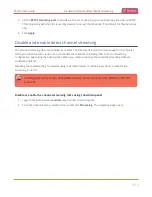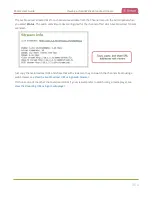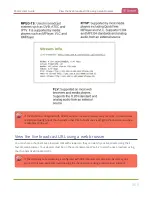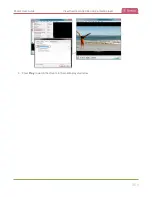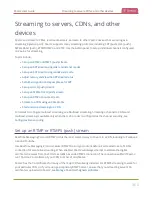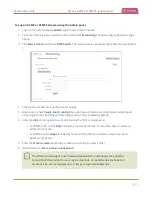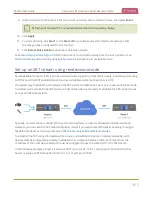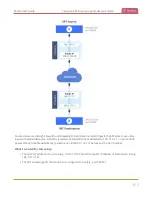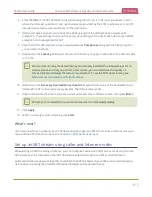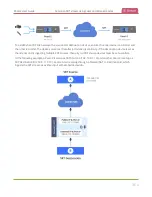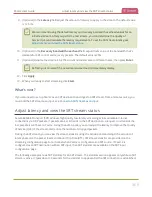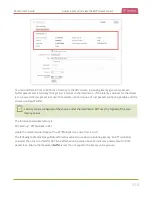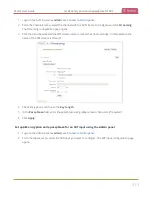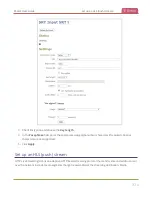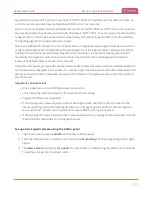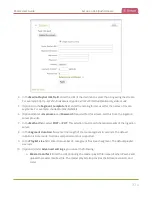
Pearl-2 User Guide
Set up an SRT stream using rendezvous mode
9. (Optional) Rename the stream. Click the current name and enter a different name, then press
Enter
.
Refresh your browser if the new stream name doesn't immediately display.
10. Click
Apply
.
11. To start streaming, click
Start
or click
Start all
to simultaneously start this stream and any other
streams you have configured for this channel.
12. Click
Delete this stream
at any time to delete the stream.
Start and stop streaming to a CDN
for instructions to control streaming from the touch screen or see
Control streaming and recording using Epiphan Live
for instructions to use Epiphan Live.
Set up an SRT stream using rendezvous mode
Secure Reliable Transport (SRT) is an open-source streaming protocol that offers quality, low latency streaming
to CDNs and other SRT enabled decoders across unreliable Internet connections via UDP.
The easiest way to establish a link between the SRT source and destination devices is to use rendezvous mode.
In rendezvous mode, both the SRT source and destination device are ready to establish the SRT connection as
soon as an SRT stream starts.
Typically, no intervention is needed from your IT administrator to traverse a firewall in rendezvous mode.
However, you can switch to SRT caller and listener modes if you experience difficulties streaming through a
firewall in rendezvous mode, see
Set up an SRT stream using caller and listener modes
To establish the SRT connection between the source and destination devices in rendezvous mode, both
devices must be configured and ready to establish the connection between them. Each must know the
IP address of the other device and both must be configured to use the same port for the SRT stream.
In the following example, a Pearl-2 is setup as SRT Source A (192.168.1.10) with port 20000 and another
Pearl-2 is setup as SRT Destination B (203.0.113.10) with port 20000.
362


